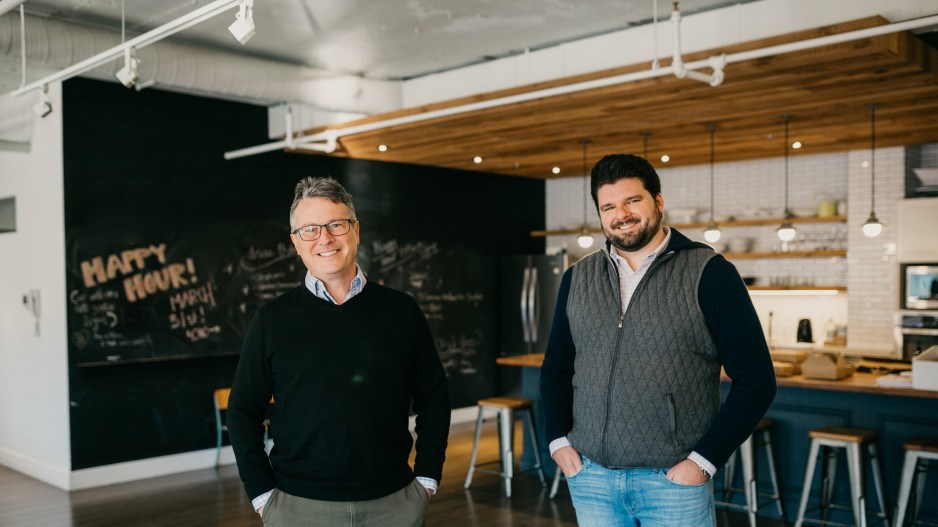Justin Tse has been at work more than a decade building his YouTube channel’s subscribership with videos featuring everything from reviews of consumer electronics to walk-through guiding viewers through stylish desktop set-ups.
The 24-year-old Victoria native has so far amassed 750,000 subscribers after getting his start as a kid.
“We’re structured as a … privately owned media company [with] a relatively small team and also working with large brands. But at the same time, it is still very much also set up like a hobby where I kind of do it for fun,” said the CEO of Feature Media Inc. “And that’s kind of the way it started back when I was 12 or 13 years old. It’s funny because the influencer marketing industry has changed so much over the last decade that when I first started, there really wasn’t a huge amount of presence in the space just yet.”
The pandemic-era explosion of this influencer marketing industry has been paying dividends for B.C. enterprises like Tse’s that have been connecting brands with consumers during an era in which many consumers have been increasingly tougher to reach.
Roger Patterson, co-founder of Vancouver’s Later Media Inc., recalls examining data for his company’s online marketing platform during the first summer of the pandemic.
Sign-ups for the platform, which zeros in on users on Instagram, quadrupled in Spain over a few short months as more people were staying at home.
“What that was, was a reaction as people lost their jobs as the economy went into a turbulent time with these lockdowns,” said Patterson.
“People realized they had to become entrepreneurial to basically provide for themselves and this was the big … switching moment, which we’ve been predicting for a while as people moved into this creator economy.”
Later was acquired last month by Boston-based Mavrck LLC after the U.S. company known for working with online influencers and creators raised US$135 million through a strategic investment financed by Summit Partners.
The selling price of Later was not disclosed but the acquisition comes after Mavrck raised a separate US$120 million from Summit Partners back in December.
Patterson now serves as the president of Mavrck’s new Later business unit and has joined its board following the close of the acquisition.
Mavrck is integrating Later’s technology into its own platform, a play that will help brands search for these creators and influencers based on traffic generated through the Vancouver company’s “link-in-bio” product, Mavrck CEO Lyle Stevens said in a statement.
Followers can click on influencers’ profile pages after viewing a post and follow links to bring them to other websites.
This feature has generated two billion page-views from users over the last six years and close to seven million users are tapping the platform to help schedule posts over Instagram.
“What we saw was this bigger shift towards digital content, digital services, etc., that people … that may have lost the jobs, that hit economic turbulence, decided to get into,” Patterson said.
That means increases not only in online sales of physical goods from entrepreneurs but also in sales of products such as online education course.
Vancouver-based Thinkific Labs Inc. (TSX:THNC) also capitalized on the trend, going public last year in a $160 million initial public offering.
It’s best known for its platform that helps businesses and individuals create and distribute online courses, ranging from hula hoop lessons to Lego-building courses.
“Our following has not grown significantly faster than previous years,” Tse said. “But in terms of marketing spend that we’ve seen from consumer tech brands specifically, it has gone up multiples within the past two years. I would even say double, if not triple, in terms of volume and rate.”
Technological advancements have also helped accelerate this draw to influencers and creators, according to Patterson, allowing companies to use more of a sniper method than a buckshot approach to reach customers.
Brands used to mostly rely on macro-influencers — the Kim Kardashians of the world who possessed massive social media followings. Patterson likened that strategy to traditional brand endorsement, similar to the way celebrities used to go on TV to promote products.
But he said this kind of marketing is far more effective when it seems authentic.
With more advanced data at its disposal, Later has been helping brands zero in on “micro-influencers” who might be plugged into the feeds of followers based on either similar interests or geography rather than their broad celebrity appeal.
Kim Kardashian endorsing a chef’s knife might score some sales. But a local chef with a smaller following – a micro-influencer – using that same knife in a social media post will likely come off as more authentic, according to Patterson.
“Right now, we’re pretty much at the micro stage, and we’re going to be moving more into the nano stage of influencer,” he said.
“You can’t just use one macro-influencer. You’re going to need to have thousands of nano-influencers to support your brand. But every one of those nano-influencers is much more authentic.”




